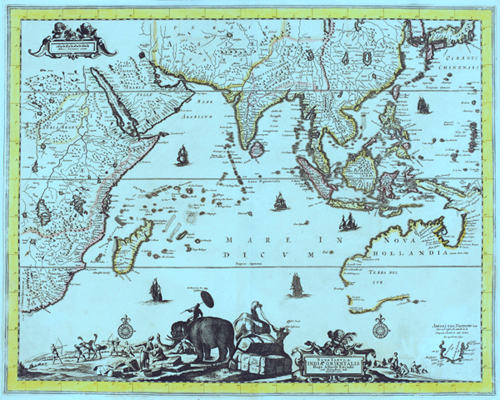Where Queensland, Australia meets Papua, New Guinea. http://www.maplandia.com/australia/queensland/torres/saibai/
|
Thursday Island |
Torres Strait is that stretch of water between the northerntip of Australia, Cape York, and the Papua coastline west of the Fly River, separating the Arafura Sea to the west, the Gulf of Papua to the north-east and the Coral Sea to the east. The islands, reefs and cays within this region are politically part of the state government of Queensland, and extend into the Coral Sea up to the Great Barrier Reef, with Darnley and Murray Islands the most eastern. The largest island is Prince of Wales, with Endeavour Strait separating it from mainland Australia. Thursday Island is the most populated island, the administrative and commercial centre for the islands. Banks and Mulgrave Islands are also significant. Navigation through the Torres Strait is hazardous, with strong tidal currents and a five-metre tidal range on the eastern side. Most of the vessels lost in the strait are small sailing vessels of under 500 tons.
The most significant loss, and indeed the most tragic in terms of life lost, was that of the steamship Quetta, 3481 tons, which struck an uncharted rock near Thursday Island in 1890 with the loss of 133 lives. The American ship Jihn de Costa, 1725 tons, wrecked five years earlier, and the 2485 ton barque Fenstanton, lost a year prior to that, fortunately claimed no lives. The American ship Rosie Welt, 1436 tons, lost 1889, and the 1698 ton sailing ship Volga, lost 1890 are another two large vessels lost in the strait, with, apparently, no loss of life. It should be noted however that a number of shipwrecked seamen were murdered by natives, the loss of the schooner Speweer being notable. Unfortunately, there seems to be little recorded detailed on the loss of most of the vessels in Torres Strait. The largest vessel, to date, to have come close to being a total loss was the 58,000 ton oil tanker Oceanic Grandeur which struck an uncharted rock 20 km from Thursday Island, 3 March 1970. Fortunately the oil was transfered to another tanker and she limped into port for repairs, but the threat of an ecological disaster always exists when large tankers use the strait from south-east Asia to eastern Australian ports. The listing includes vessels listed as having been 'lost off Cape York'.
THIS man was one of the last of his breed - the Torres Strait pearl diver.
Pearling put Thursday Island on the map in the late 1800s once Europeans found out about the riches beneath the sea, known by the Romans as God's frozen tears.
It was an industry organised on racial lines. After legislation in 1898 restricted Asian ownership of pearl luggers, Europeans took control with the labour provided by Japanese, and later, Islander workers.
Despite the glamorous image of the industry, the work was hard, the hours long and the conditions dangerous.
Sharks were just one hazard. Much more feared was the risk of slicing open an air line on a coral outcrop or the sudden feeling of cold, clammy skin - the first sign of the bends.
The graves of about 700 divers, who regularly dived to depths of 35-40 fathoms (70m) for three minutes at a time, now dot the "TI" cemetery.
In those pre-scuba days, divers were equipped with an airline leading from a compressor on the lugger to the weighted helmet they wore. They also had a safety line watched closely by the pearling boat crew.
Disenchantment about their working conditions came to a head in 1936 when Islanders organised the first strike by indigenous Queenslanders, lasting up to nine months on some islands.
There was also the unpredictable weather to contend with, notably an 1899 cyclone and storm surge which sank 55 pearling luggers and killed 300 crew working north of Cooktown.
Still, the rewards for hard workers or lugger owners could be great. Pearlers in the year this photo was taken harvested about 1200 tonnes of mother of pearl, the lustrous inner lining of the shells which was used in everything from pistol grips to buttons.
As overfishing slowly decimated the pearl beds the luggers went further and further afield. Their eventual return to port was the highlight of the year on Thursday Island.
But continued overfishing and the advent of plastic buttons and high-quality fake pearls spelled the end of pearl diving less than a dozen years after this picture was taken.
One of the last of the traditional divers, Alfred "Alfie" Mills, whose siblings included the famous Mills Sisters singers, died in 2005.
The era now lives on in the songs of 2004 ARIA award-winning Thursday Islander Henry Gibson, better known as Seaman Dan, and a small pearl farming industry which started in 1957.
Although nowhere near as big as in Western Australia, farming brings in more than $1 million a year, with up to 100,000 pearls produced for the export market.
Boy dancers, Bamaga


+copy.jpg)















.jpg)














.jpg)


No comments:
Post a Comment